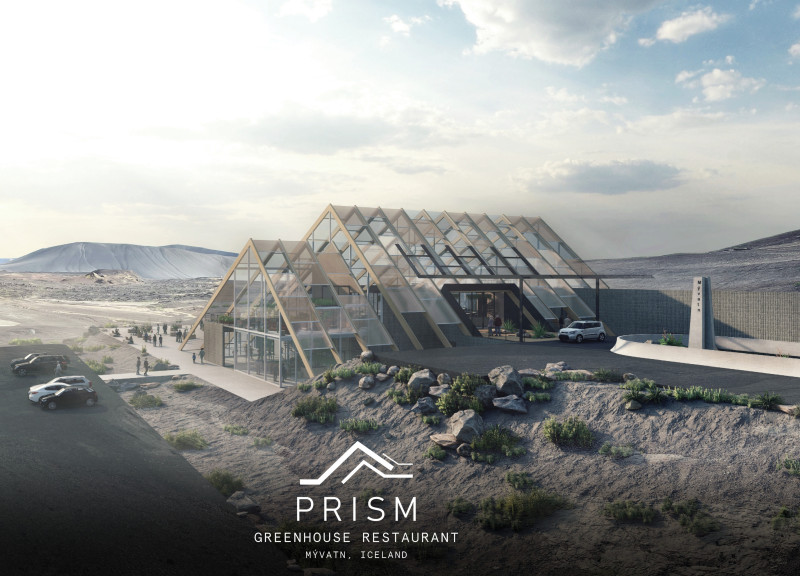5 key facts about this project
The PRISM Greenhouse Restaurant is situated on the hilly terrain of Mývatn, Iceland. It serves both as a dining space and an educational center focused on sustainability and local agriculture. The design integrates the landscape, creating a connection between the building and its natural surroundings. At the core of the structure is a greenhouse gallery that highlights the benefits of local produce and indoor farming practices, aiming to involve visitors in the conversation around sustainability.
Design Concept
The greenhouse functions as a central element within the overall design. It encourages interaction with the source of food and promotes an understanding of local food systems. By placing the greenhouse at the heart of the restaurant, the design fosters a unique atmosphere where diners can observe the growing process while enjoying their meals.
Spatial Arrangement
The structure adapts to the sloping terrain with careful consideration of the site. Portions of the building slide apart to create an outdoor terrace that allows natural light into the space while providing views of the surrounding area. Dining is arranged on glass platforms, creating a sensation of floating above the soft landscape. This arrangement enhances the overall dining experience and deepens the connection to the natural environment.
Materials and Sustainability
The materials used in the restaurant reflect the design’s focus on sustainability. The roof is made from polycarbonate and glass panels, maximizing natural light while framing views of Hverfjall volcano and Mývatn Nature Baths. Locally sourced timber cladding adds warmth, and prefabricated I-beams support the elevated dining areas. Sustainable features are woven throughout the design, including systems for managing rainwater and geothermal heating for the greenhouse.
Design Detail
A notable feature of the PRISM Greenhouse Restaurant is the inclusion of herb planters positioned between dining tables. This allows guests to pick fresh ingredients as they dine, promoting a hands-on connection to the food. It serves not only to enhance the dining experience but also to encourage a better understanding of food production, making the visit both enjoyable and educational.






















































